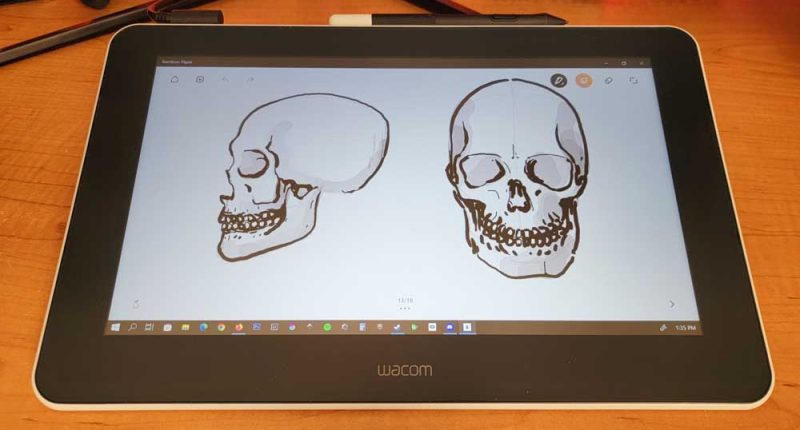Wacom has long been the go-to brand for digital artists and creatives when it comes to pen tablets. That doesn’t mean they don’t have some serious competition, because they do. One product in particular that sees increased competition is the Wacom One Creative Pen Display tablet. This is their entry-level pen display tablet featuring a 13.3″ screen, a Wacom One pen, bundled bonus software, and compatibility with Windows, Mac, and Android. While not their top-of-the-line pen display tablet nor their best, the Wacom One is still an excellent starting point for those getting into digital media.
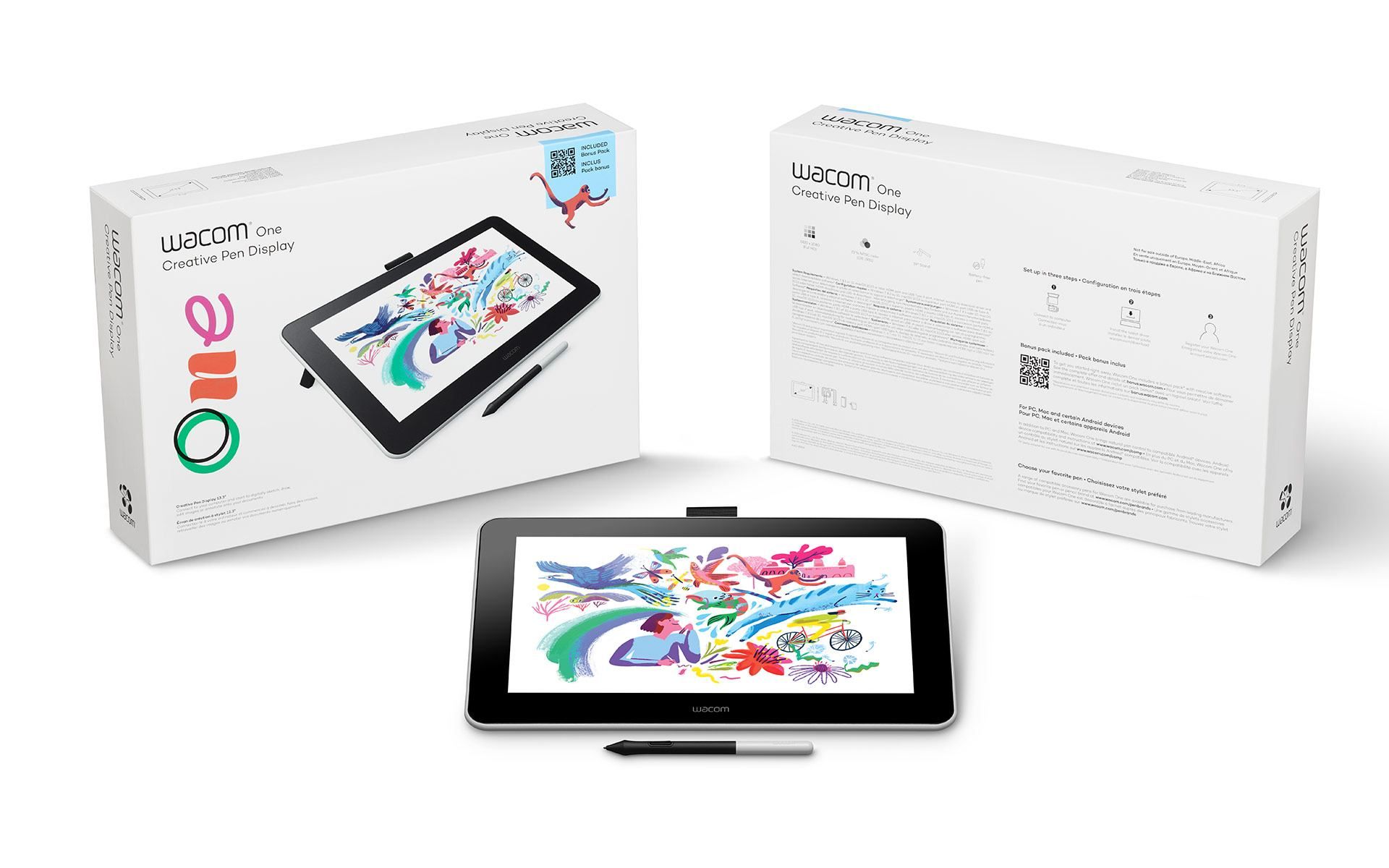
DESIGN
The Wacom One for the most part looks like a giant tablet, like an iPad or Android tablet, except that it doesn’t have its own OS and it’s basically just a display. The display isn’t bezel-less though and has huge ones all the way around. That’s not really a big deal though. The body is mainly made of plastic finished off in white and feels sturdy enough to last.
The back of the tablet also has two retractable risers that let you angle the tablet when in use. These are also pretty sturdy and don’t have much flex when you push down on them. I don’t think you’ll have any issues with them breaking after long-term use. The back also has rubber feet which will keep the Wacom One from sliding around your table.
The top of the tablet has a pen holder which is a nice touch and will keep you from losing it. There’s also one USB-C port on top which is used for the cable that connects to your computer and power adaptor. Aside from that, that’s pretty much with the Wacom One. It’s rather simple looking but gets the job done.
As for the Wacom One Pen, it’s pretty basic and not as good as the Intuos Pro Pen 2. It only has one button on the side and there is no eraser tip. It’s very comfortable to use, but it’s as basic as things get when it comes to stylus pens.
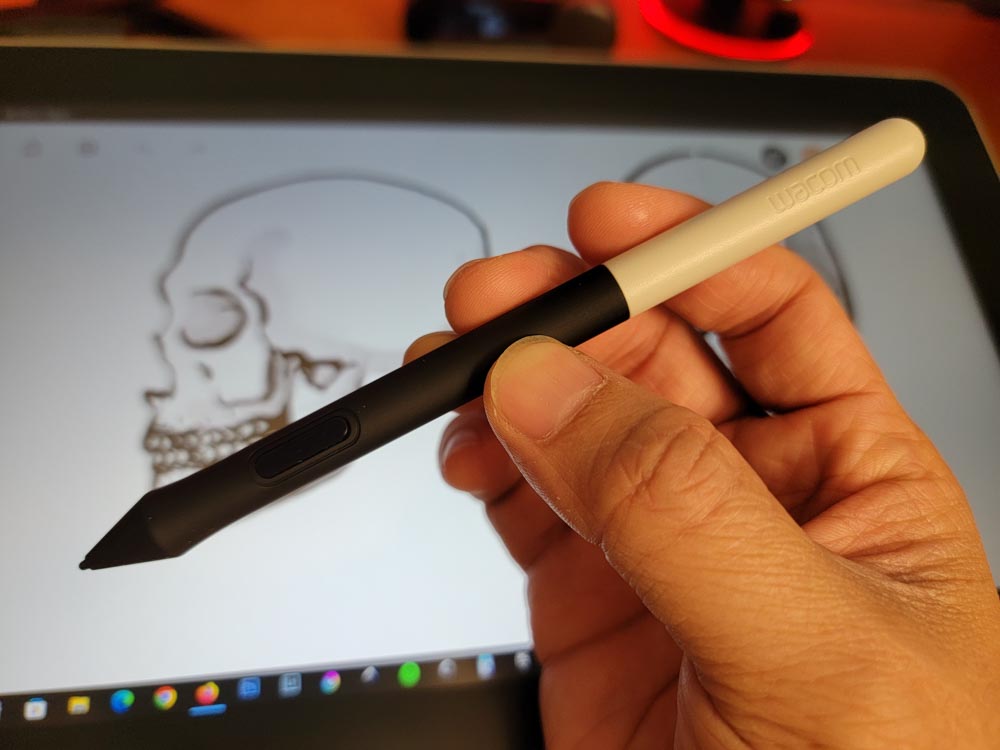
EXPERIENCE
While I enjoyed my time with the previous Wacom Intuos Pro, once you start using a pen tablet with a display on it, it’s pretty hard to go back to anything else. Although I was a bit annoyed by the way in which you have to run the cables for the Wacom One, that annoyance goes away once you have it all set up. I’m using it with a desktop PC so a lot of the wires get hidden anyways on the way to the PC. On the tabletop side, you only see one cable, so all-in-all not really a big deal.
As for actual usage, you’ll need to set up Wacom Center software to make full use of the Wacom One. It’ll probably download some drivers, maybe an update, and many of the bonus software you might want to use. I was a bit disappointed that much of the bonus software was only extended trials and not “keep forever-type” things. But I’m assuming that most of you who are going to be purchasing this probably already have some favorite software you already use.
Next up is the fact that the Wacom One not only functions as a pen tablet but also as a second display. You can either use it to extend your current work area or have it mirror your main display. I chose to extend the display because it allows you to work on a drawing for instance while also having another window up on a different display as a reference. Of course, the choice is yours how you choose to use it, but this is just how I use it.
Anyways, for the actual apps I used to test the Wacom One with, one of my favorites is Krita but I also tested this out with Wacom’s own Bamboo Paper app and also Photoshop.
All I can say is what an immediate improvement in accuracy when it comes to using the Wacom One. There really is nothing like being able to draw directly on a display and have that translate to a 1:1 thing with the media you’re working with. While working with a regular pen tablet is nice, there’s always a small amount of guesswork required when trying to do things. It’s still more accurate than a mouse when working with digital media but it’s not perfect. With a display on the tablet, it’s pretty much perfect. The Wacom One itself isn’t the best display tablet out there, but it’s still a great option for beginners.
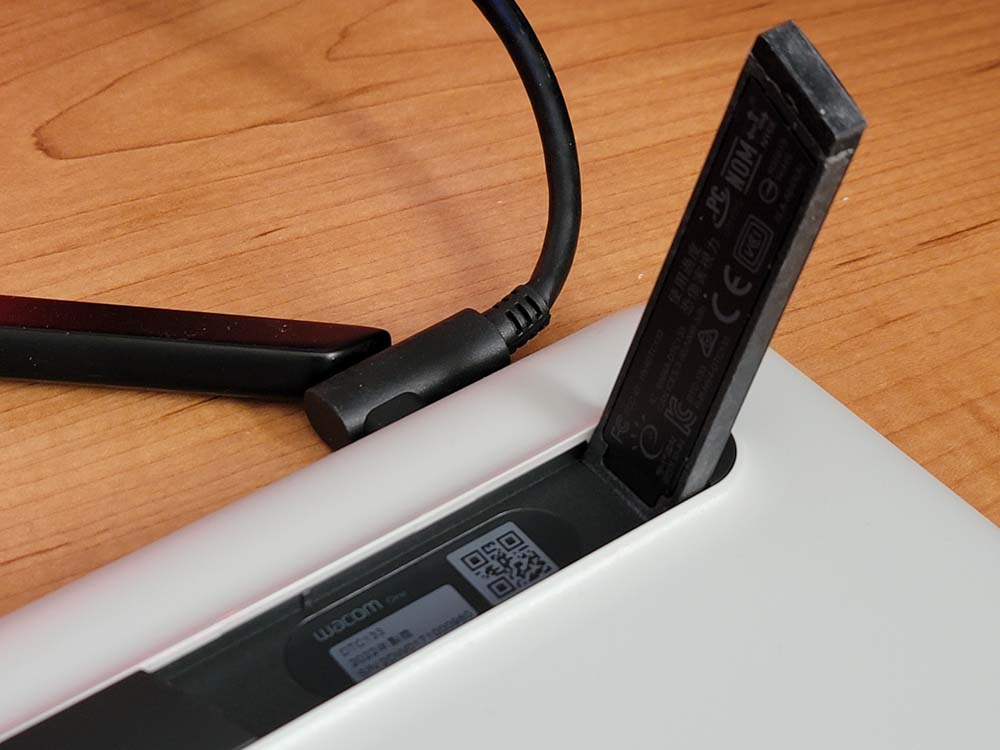
IMPROVEMENTS
The design isn’t perfect and there are a few areas that could use improvement. For starters, the Wacom one does not have any shortcut buttons or dials. That means there’s no real quick way to manage the tools you use the most. You won’t be able to adjust tool size on the fly or swap to your most used digital tools. Instead, you’ll just have to use what’s on-screen like you’re using a mouse. The display also doesn’t support touch, so no gesture shortcuts either.
While the display is pretty nice, it could also be a bit brighter as I feel like it isn’t quite bright enough, even at its highest setting. I however really love the matte screen though which helps cut down glare and makes pen usage feel a lot more natural.
There are also a lot of cables you need to plug in and it won’t function wirelessly like the Intuos Pro line does. You however can’t really get around this because you need an HDMI connection for the display, so you’re going to have cables regardless.
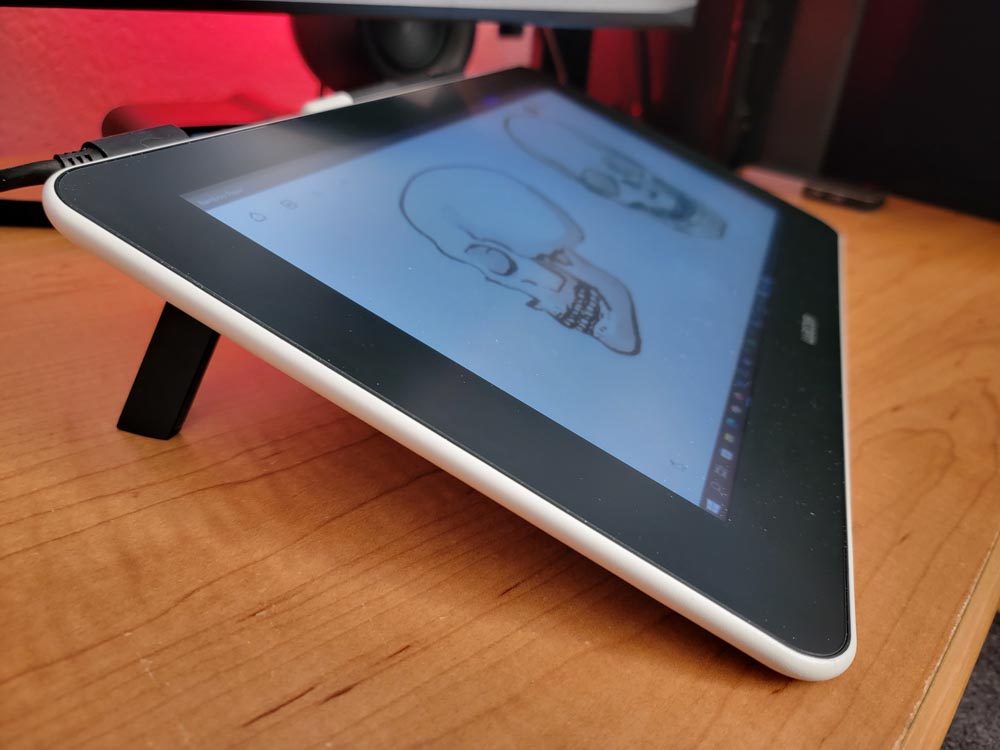
FINAL THOUGHTS
The Wacom One isn’t meant to be a top-of-the-line item from Wacom. They have the Cintiq line for that. Instead, the Wacom One is, in my opinion, a starter pen display tablet for the masses. It has a lot of pretty good features and the build quality is actually quite good. While there are some things that could be improved or added, that doesn’t hinder the functionality of the Wacom One nor does it make it any less useful. It might not be a Pro-level display tablet, but for my needs, it’s perfect.
However, there is a lot of competition in the space right now so Wacom needs to stay on its toes if it doesn’t want to lose out here.
The Wacom One is available now on Amazon.
